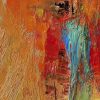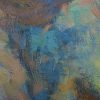In addressing the question of how research and writing processes in the human sciences have changed or are changing in the digital era, as outlined by Mary Lee Kennedy, I would start with the following premise: that what has changed is not reducible to the “digital” (whether understood as methodology, medium, or set of epistemic affordances). Rather, the change is conditioned by an overall destabilization in knowledge genres and forms with the digital being only one factor, however central.
For most of the past century, there were ready-at-hand answers to the question of “what scientific knowledge looks like”: namely, the learned article or specialized essay as printed in a professional journal or, in the case of sustained forms of argument, the scholarly book. Print was the medium of reference and these sorts of products implied shared assumptions regarding the proper scale on which arguments were to be made, the chunking of information, forms of evidence, cross-reference and documentation, and a bias toward individualized models of authorship. They also implied certain (unexamined) codicological, typographical, and graphic conventions (viz. the primacy of textual over visual argument). Last but hardly least, they led to an understanding of printed knowledge as product rather than process.The once firm boundary line between libraries, museums, archives, and the classroom grows porous as scholarship starts shuttling back and forth between the stacks and the streets.The temporality of scholarly communications was slow and occasional: deliberately slower than that of commercial publishing and printing… in the name of editorial quality, professional norms, and long-duration knowledge. Audience was a secondary consideration. Iterative communication of research in progress was relegated to lecture halls.
The phrase “Knowledge Design” describes the situation in the contemporary human sciences that most engages me as a so-called “digital humanist”: the fact that the form that advanced knowledge assumes can no longer be considered a given. The tools of scholarly inquiry have become as much objects of research and experimentation as have modes of dissemination. Statistical methods press against one edge of the qualitative human sciences; graphic and information design press up against another. Laboratories arise with a team-based ethos, embracing a triangulation of arts practice, critique, and outreach, merging research, pedagogy, publication, and practice. The once firm boundary line between libraries, museums, archives, and the classroom grows porous as scholarship, deprived of its once secure print-based home, starts shuttling back and forth between the stacks and the streets. Scholarly communication has become constant, iterative, multichannel. Knowledge resources are exploding and analytical tools allow for zooming back and forth through micro, meso, and macro scales.
All of which brings me to the second question central to the Curating Knowledge work, “What are the primary challenges and opportunities raised by these changes?” This is, of course, a very big question, and I’m going to limit my answer to two domains that directly intersect my work at metaLAB (at) Harvard.
The first involves the development of tools, techniques, practices, and resources that fulfill the transformative promise of open content and collections data: namely, to enable present and future generations of scholars, curators, and students of art to explore the cultural record in new ways. The spectrum of such ways is broad and would include, among many other things, exposing forgotten histories through the in-depth excavation of single objects; providing moment-by-moment “picture-perfect” portraits of the evolution of collections and collecting institutions over the course of hundreds of years; tracking the careers of entire generations of artists; tracing the migration of art works through the art market as a function of their critical reception; visualizing networks of power and influence; mapping the dissemination of genres and themes over time and space; exploring entanglements between economic, social, and cultural trends over timescales from hours and days to centuries and millennia.
The second challenge involves the task of designing and communicating the resulting representations, be they visualizations, interactive timelines, diagrams, or media-rich descriptions, in fresh new ways that add value and meaning to the world. These representations tell stories and the stories in question need to be just as well crafted as the brilliant paintings of our ice-age predecessors.These representations tell stories and, whether freestanding or nested within that middle stratum of narrative where culture and the study of culture have traditionally found their home, the stories in question need to be just as well crafted as the brilliant paintings of our ice-age predecessors.
As any skilled storyteller knows, one cannot tell every story at once. A few key threads must be pulled from every tangled skein of stories, granted primacy, and developed at the expense of others. The same principle applies to the expanded field of scholarship enabled by open content and collections data. Here the challenges are all the greater because representations of data aren’t self-evident objects of human experience, not to mention sources of emotion. On the contrary, they are technical constructs, abstractions that have to be worked, massaged, and crafted in a multitude of ways and by means of a multitude of tools and techniques in order to generate artifacts that enhance knowledge, persuade, make sense, or add value to a given experience. This is not just a technical task: it’s a cultural task that involves technology, design, a sure-footed sense of how we reconnect this brave new world of cultural data big and small back to that middle stratum where culture resides and human experience finds its home.













